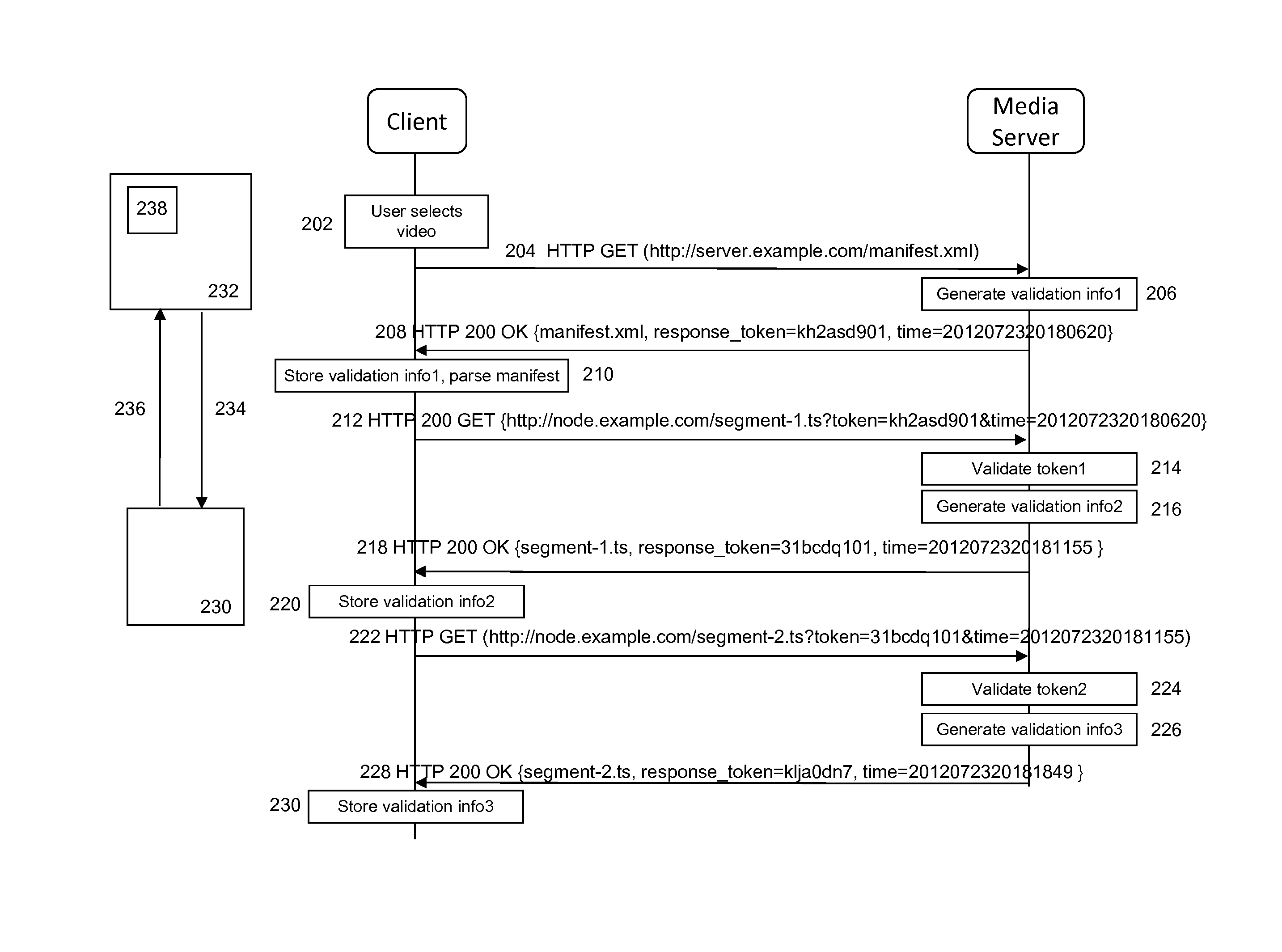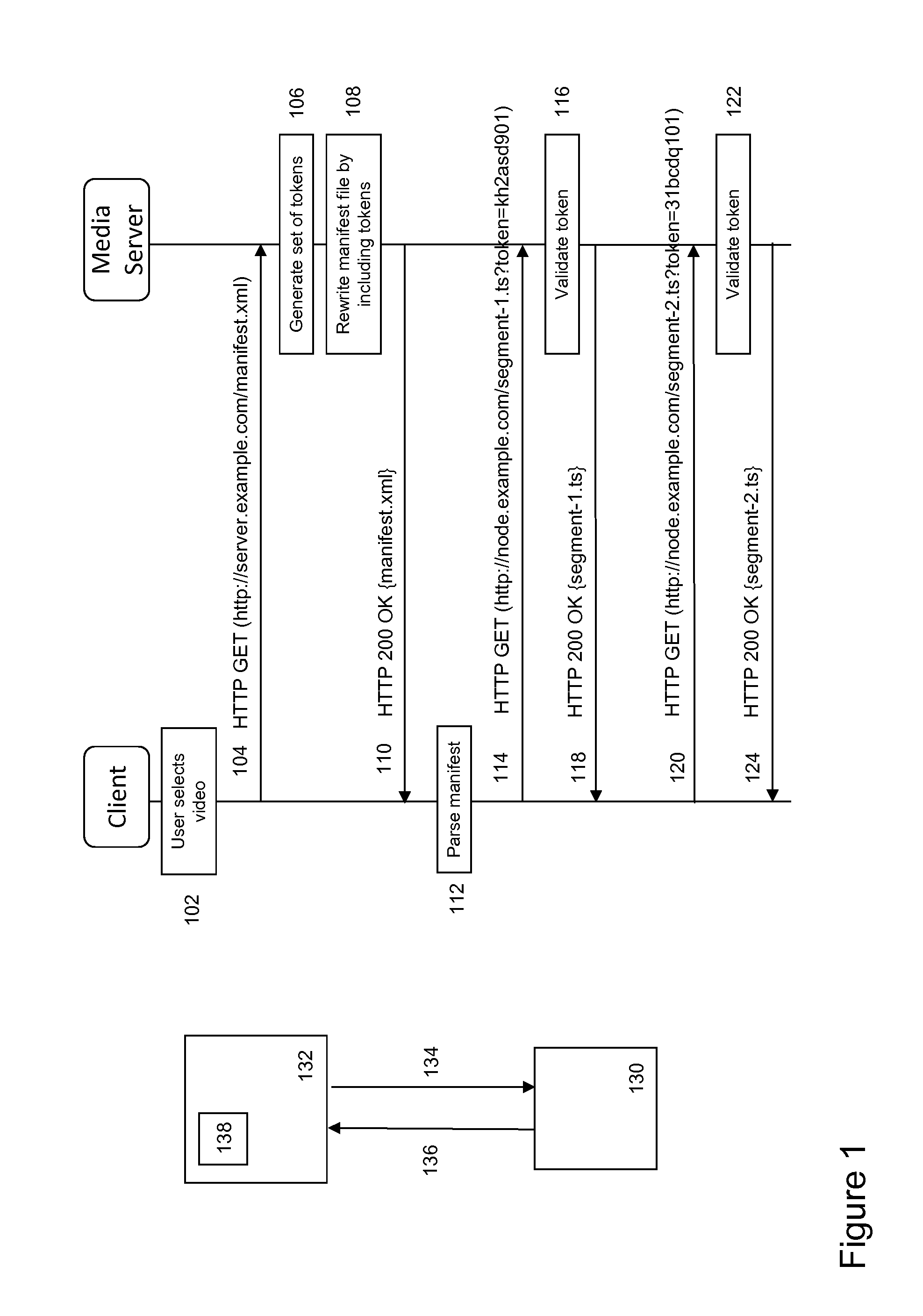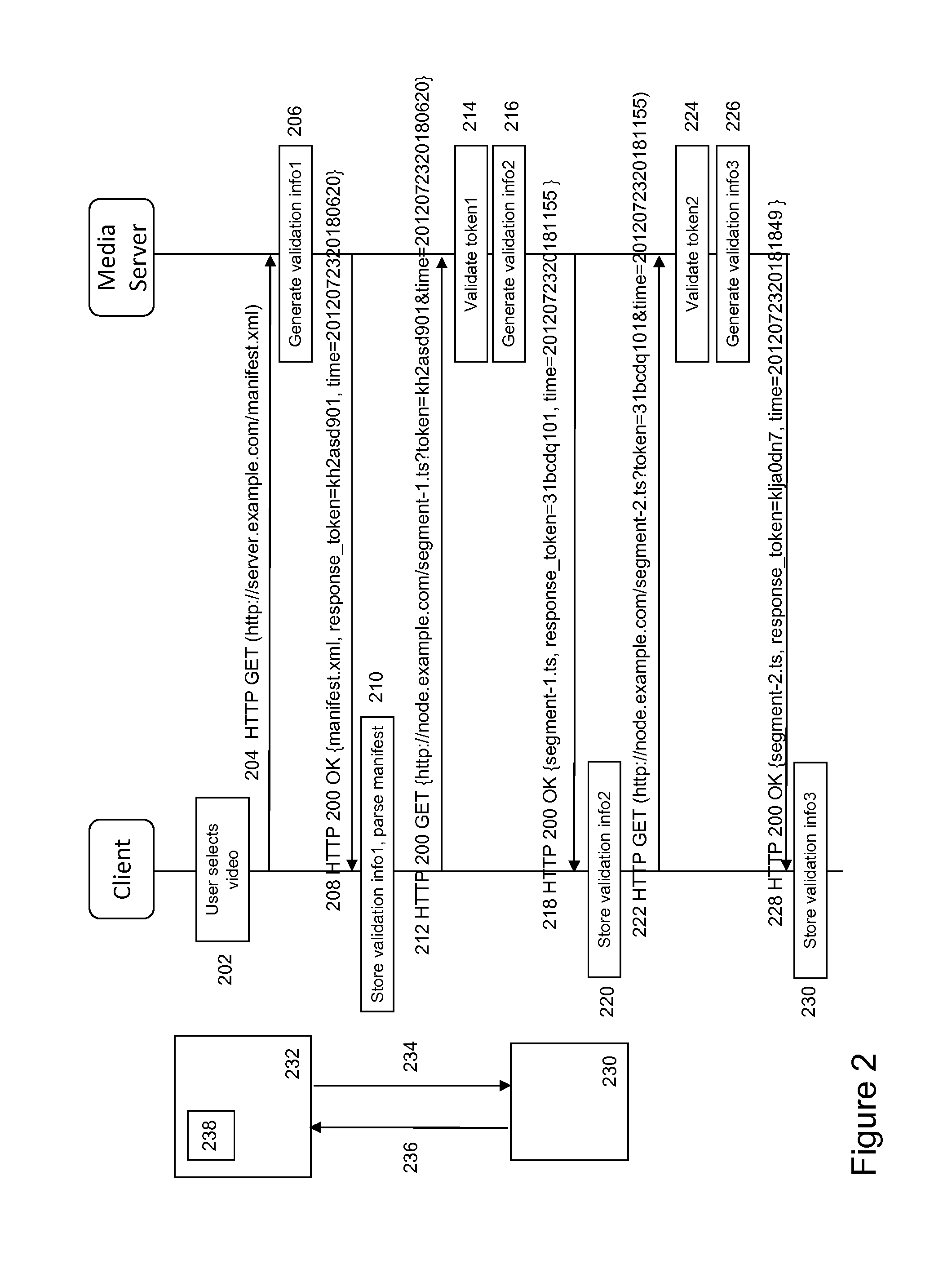Token-Based Validation Method for Segmented Content Delivery
a token-based validation and content technology, applied in the field of token-based validation of segmented content delivery, can solve the problems of introducing a new (more advanced) deep-linking vulnerability, unable to deliver content directly, and rarely selling conten
- Summary
- Abstract
- Description
- Claims
- Application Information
AI Technical Summary
Benefits of technology
Problems solved by technology
Method used
Image
Examples
Embodiment Construction
[0047]FIG. 1 depicts an overview of a protocol flow of a known token-based validation process between a client 130 in a content processing device and a delivery node 132, e.g. a delivery node, which is configured to deliver segmented content items to the content processing device. A stateless streaming protocol, such as HAS streaming protocol, based on request and response protocol messages 134,136 is used in order to control the streaming process between the client and the delivery node. Here, a content processing device may generally relate, e.g. a (mobile) content play-out device such as an electronic tablet, a smart-phone, a notebook, a media player, a home gateway or DASH enabled devices such as a DASH-enabled HbbTV display device. Alternatively, a content processing device may be a set-top box or content storage device configured for processing and temporarily storing content for future consumption by a content play-out device. Similarly, the delivery node may be part of or as...
PUM
 Login to View More
Login to View More Abstract
Description
Claims
Application Information
 Login to View More
Login to View More - R&D
- Intellectual Property
- Life Sciences
- Materials
- Tech Scout
- Unparalleled Data Quality
- Higher Quality Content
- 60% Fewer Hallucinations
Browse by: Latest US Patents, China's latest patents, Technical Efficacy Thesaurus, Application Domain, Technology Topic, Popular Technical Reports.
© 2025 PatSnap. All rights reserved.Legal|Privacy policy|Modern Slavery Act Transparency Statement|Sitemap|About US| Contact US: help@patsnap.com



